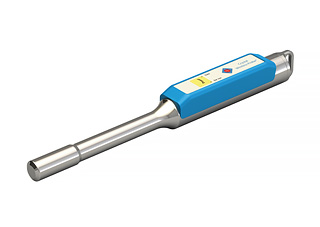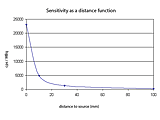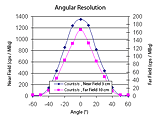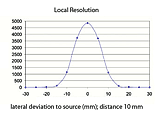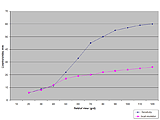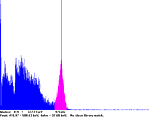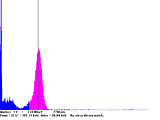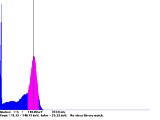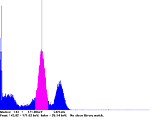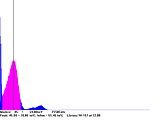Wireless Bluetooth-Probe "Crystal Wireless Probe"
1. Description
The lightweight, compact gamma probe Crystal Wireless Probe is an ingenious precision instrument that works without any annoying cables. Thanks to its flexible signal transmission concept, the user now even has the freedom to decide to connect Crystal Wireless Probe to one of our control units SG03 and SG04 [Crystal Probe-automatic-], Windows [PC, laptop] or Android [Tablet PC Smart-phone]. A reliable and long lasting performance is guaranteed even under difficult conditions by the lightning-fast setup in combination with persistent batteries.
Crystal Wireless Probe has excellent detection capabilities, meaning an exclusive sensitivity combined with excellent side shielding by the already integrated collimation. In addition, it is constructed to be shock resistant!
Due to all these characteristics Crystal Wireless Probe is an extremely effective and practical instrument to detect radioactive enrichments (intra-) operatively.
- lightweight and compact
- no disturbing cables
- operating with all Crystal Probe Systems, computers (Windows), smartphones (Android)
- outstanding sensitivity
- excellent side shielding (integrated collimation)
- shock resistant
- very fast setup
Crystal Wireless Probe is designed for the radiation energy of the most used nuclide 99mTc (140 keV) and has optimal parameters for it. The detectable energy range is from 70 keV (201Tl) up to 511keV (PET nuclide). When used intraoperatively the probe has to be protected by a sterile latex cover, as for example a sterile glove.
2. Technical data
| Detector | CsI:Tl-szintillation crystal, Si-pin-photodiode |
| Gamma-energy range | 60 keV … > 511 keV |
| Properties | length: 242 mm diameter hand piece: 23 mm diameter tip: 15 mm weight (incl. battery): 200 g |
| Connection to control unit | via Bluetooth |
| Range of signal transmission | 10m |
| Login time (1st login / re-login) | 8-10s / 5s |
2.1 Collimation and side-shielding
| Collimator | probe tip made from surgical steel (outside) with integrated tungsten-collimation (not changeable) |
| Material | Tungsten, lateral thickness 3,15 mm; rear thickness 4 mm |
| Dihedral angle (FOV) | 40° FWHM |
| Side-shielding | 99,97 % @ 140 keV (99mTc) |
2.2 Background sensitivity
Zero effect < = 10 c/min
2.3 Power supply
| Battery | Li-ion-cell type CR123A (Panasonic or Duracell) |
| Nominal voltage and capacity | 3V/1550mAh |
| Operation time | > 15...16 h |
| Operation time with „Bat-low“ mode | 0,5...1 h |
| Power consumption „Connection established“ | ca. 0,24 W |
| Max. current consumption during login | 143 mA |
| Protection degree against electrical shock | CF |
| SMD fuses | 1 x 500 mAF, 4 x 200 mAF |
2.4 Sensitivity and Resolution
The basic sensitivity is determined by the integrated collimator (40°). The sensitivity is shown in the figure - its depending on the distance between lymph node and probe tip. The Crystal Wireless Probe has a high sensitivity > 18.000 counts/s/MBq.
The angular resolution with a standard collimator (40°) is determined in the near field (distance: 3 cm) and in the far field (distance: 10 cm).
The spatial resolution is determined in the near field (distance: 1 cm). The probe has an excellent spatial resolution < 13 mm (FWHM).
Spatial resolution, angular resolution and sensitivity depend strongly on the actual measurement conditions and from the selected collimator geometry. In the table spatial resolution and sensitivity of different collimators were determined in a water phantom.
| (Entfernung Sondenspitze-Quelle: 30 mm) | Kollimator-Öffnungswinkel 40° | |||
| local resolution in air | mm | 23 | ||
| local resolution in water | mm | 24 | ||
| Sensitivity in air | Counts/MBq | 690 | ||
| Sensitivity in water | Counts/MBq | 585 | ||
Due to the very good side shielding and good spectral energy resolution of our probes the spatial resolution and sensitivity in water (phantom) is only slightly reduced compared to the results in air.
2.5 Energy spectra
The energy spectra of the probe, recorded with nuclides used most in medicine:

